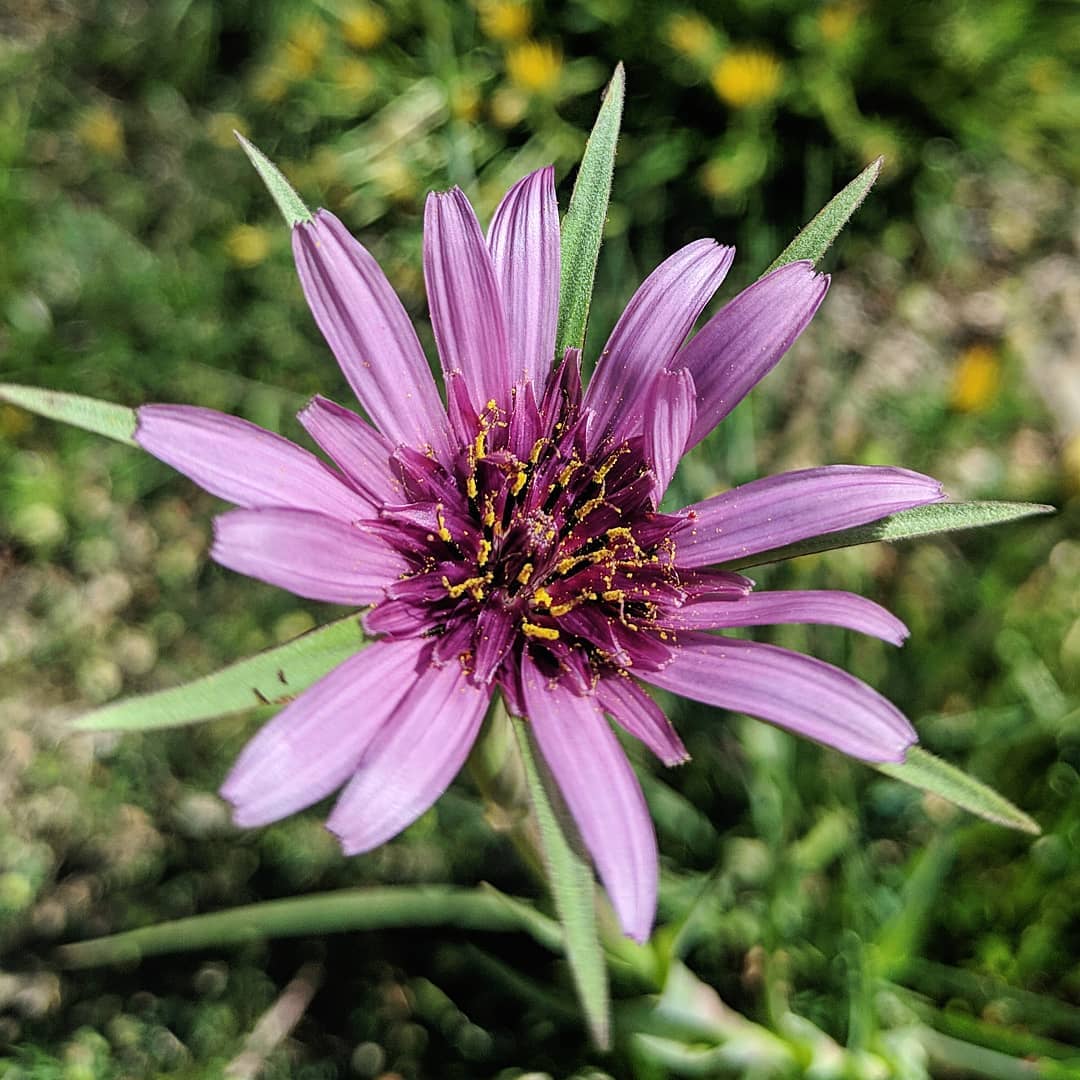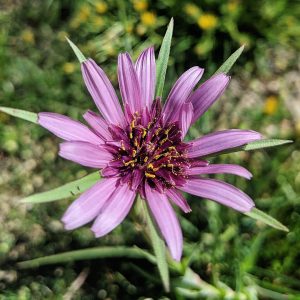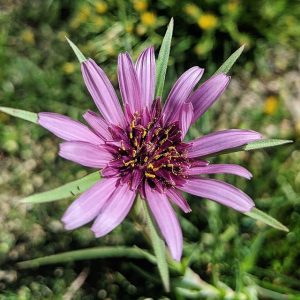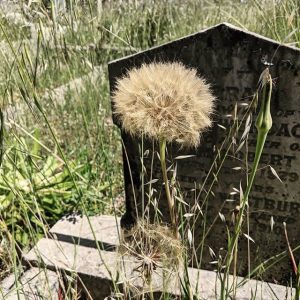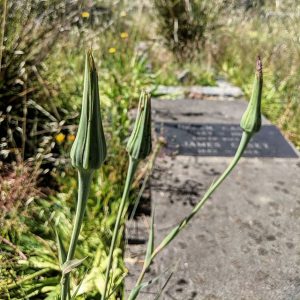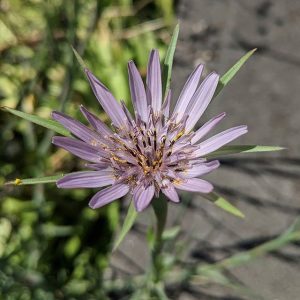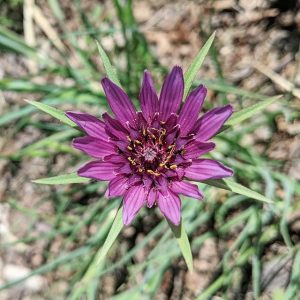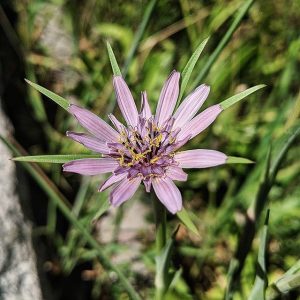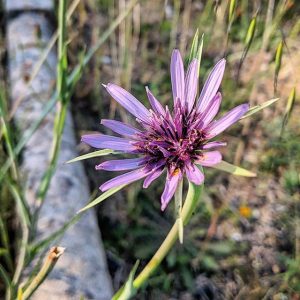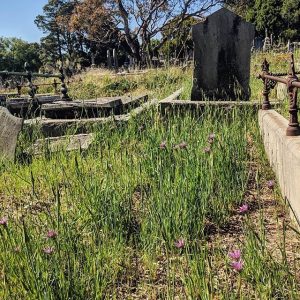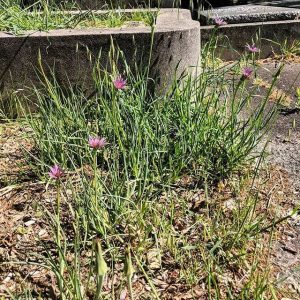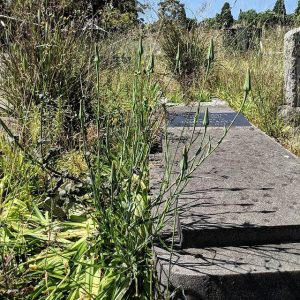Purple Salsify (Tragopogon porrifolius), a taproot-forming biennial flower from Europe, and an occasional casual food crop that like so many others became a weed in Southeastern Australia. Also known as Oyster Plant, Goatsbeard or Noon-flower, the last not to be confused with Victoria’s native pigface noon-flowers in the genus Disphyma.
Joseph Hooker, in his 1859 essay on the Flora of Australia, reported second-hand that Salsify was already a weed in Victoria at that date. This is suggestive of a nearly immediate arrival either as a veggie crop of some amongst the preemptive rights crowd, or as a contaminant in early shipboard hay or in shipments of grain or pasture seed. The first formal botanical collections were made somewhat later: 1870 in Tasmania, 1883 in Victoria.
Despite its presence as a weed, Salsify enjoyed recurring promotion in newspapers and books as an alternative vegetable through the mid-twentieth century. The root has the elusive taste of oysters when boiled in a soup or stew, and it came with the promise that the crop needed little work after sowing and thinning, beyond “keeping the ground free from weeds and stirring the surface occasionally” (Weekly Times, Melbourne, 13 March 1875), perhaps a useful red flag that the plant being promoted was still more weed than vegetable.
The confused concept of this plant on the edges of productive Australian society is perhaps best captured in a 1937 article in The News, an Adelaide paper, following up on an earlier report from NSW:
“Along South Australian roadsides and in uncultivated paddocks there is a despised weed that is eagerly sought in Europe as a delicacy. This weed, known as salsify, worried the Illabo Shire Council [NSW] so much that councillors obtained information about it as they considered it to be a noxious weed. Then they learned that it was cultivated as a delicacy in Europe. ‘It is common in South Australia,’ the chief agricultural adviser (Mr. Scott) said today. ‘But I have never heard of anyone eating its long tap root. I certainly have not done so. It is not troublesome, the stock eat it, and tillage easily destroys it.’
View Original Post on Instagram
Search for information about Tragopogon porrifolius in the Flora of Victoria
View information and occurrences of Tragopogon porrifolius on the Atlas of Living Australia
